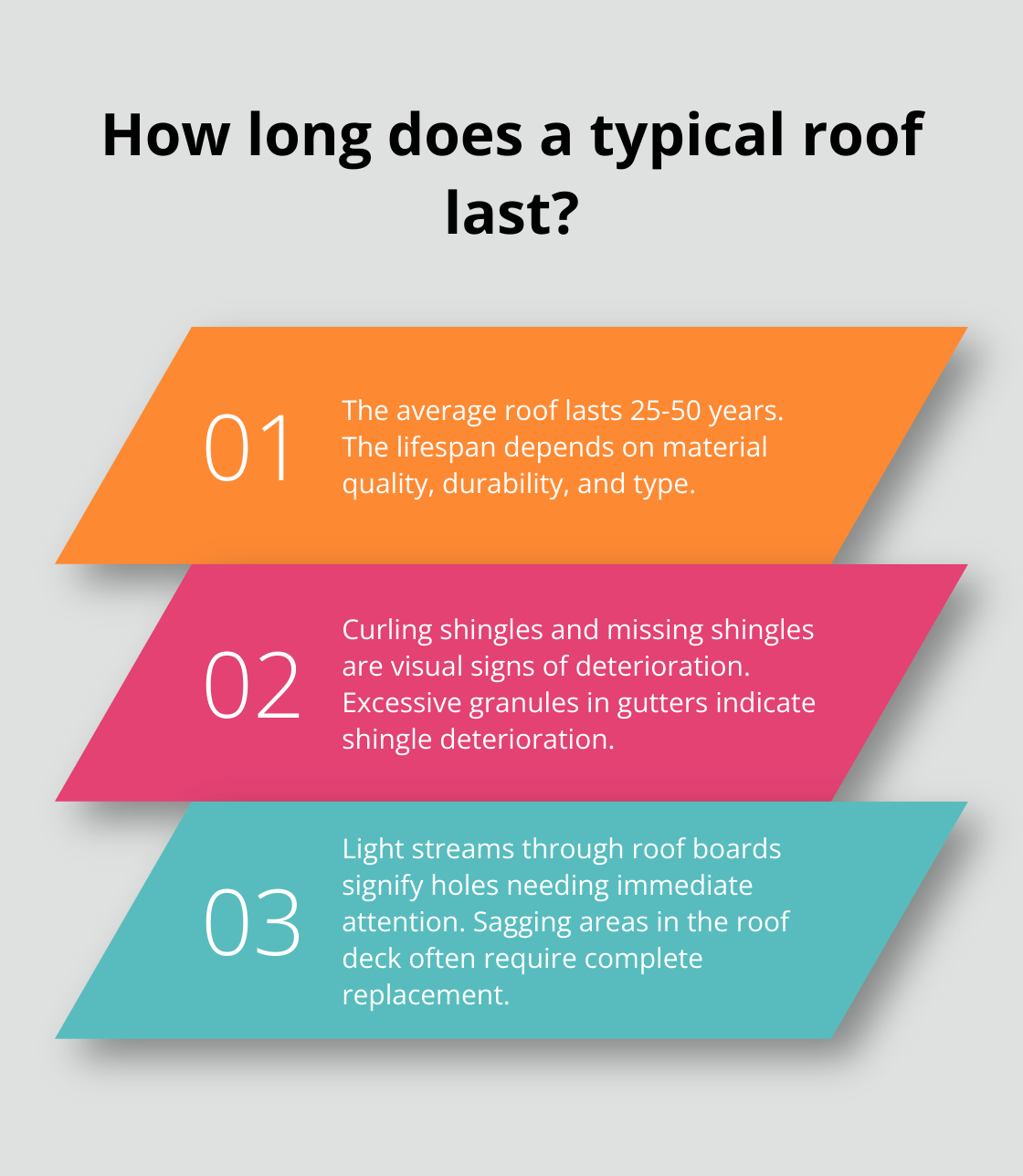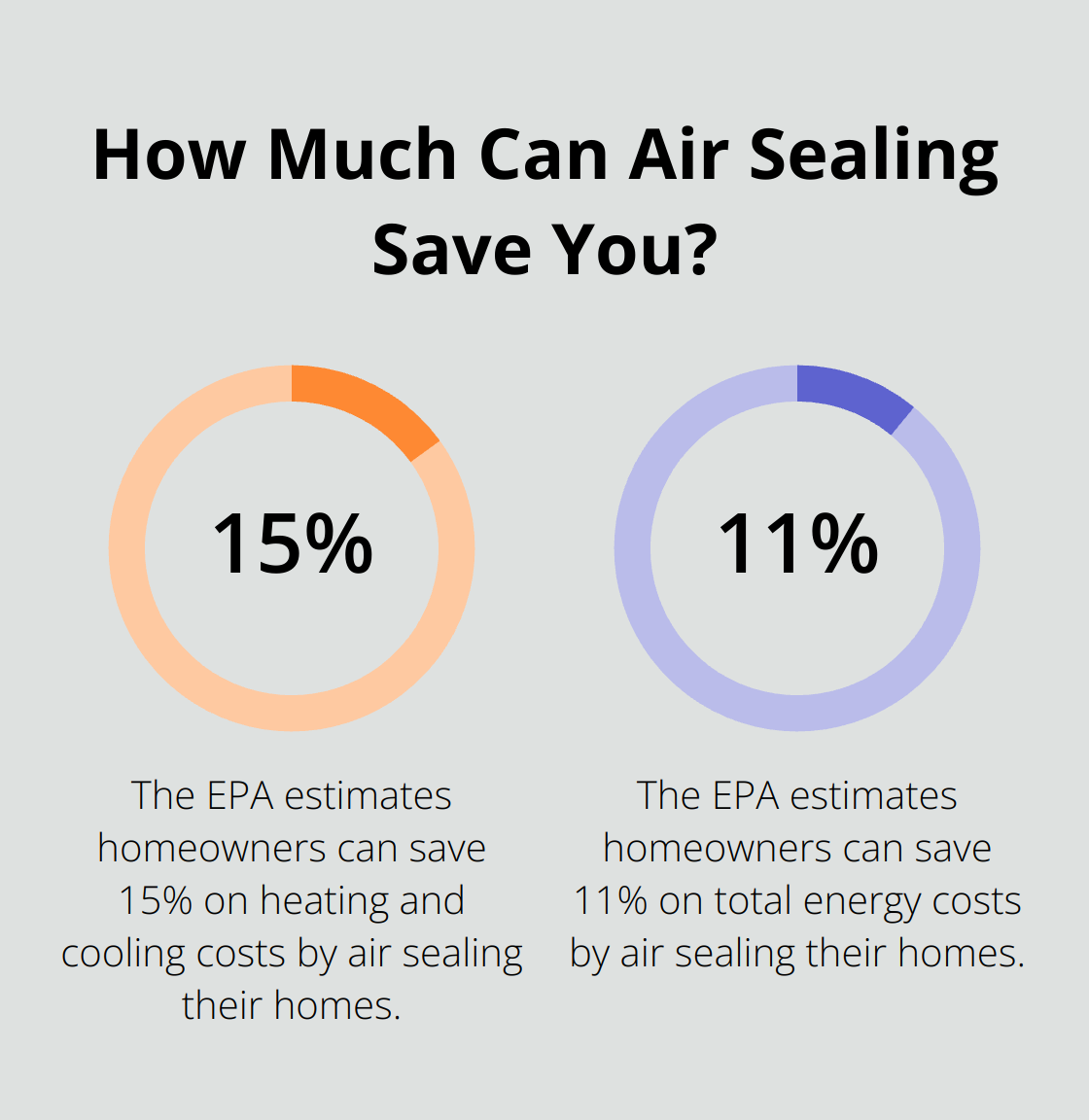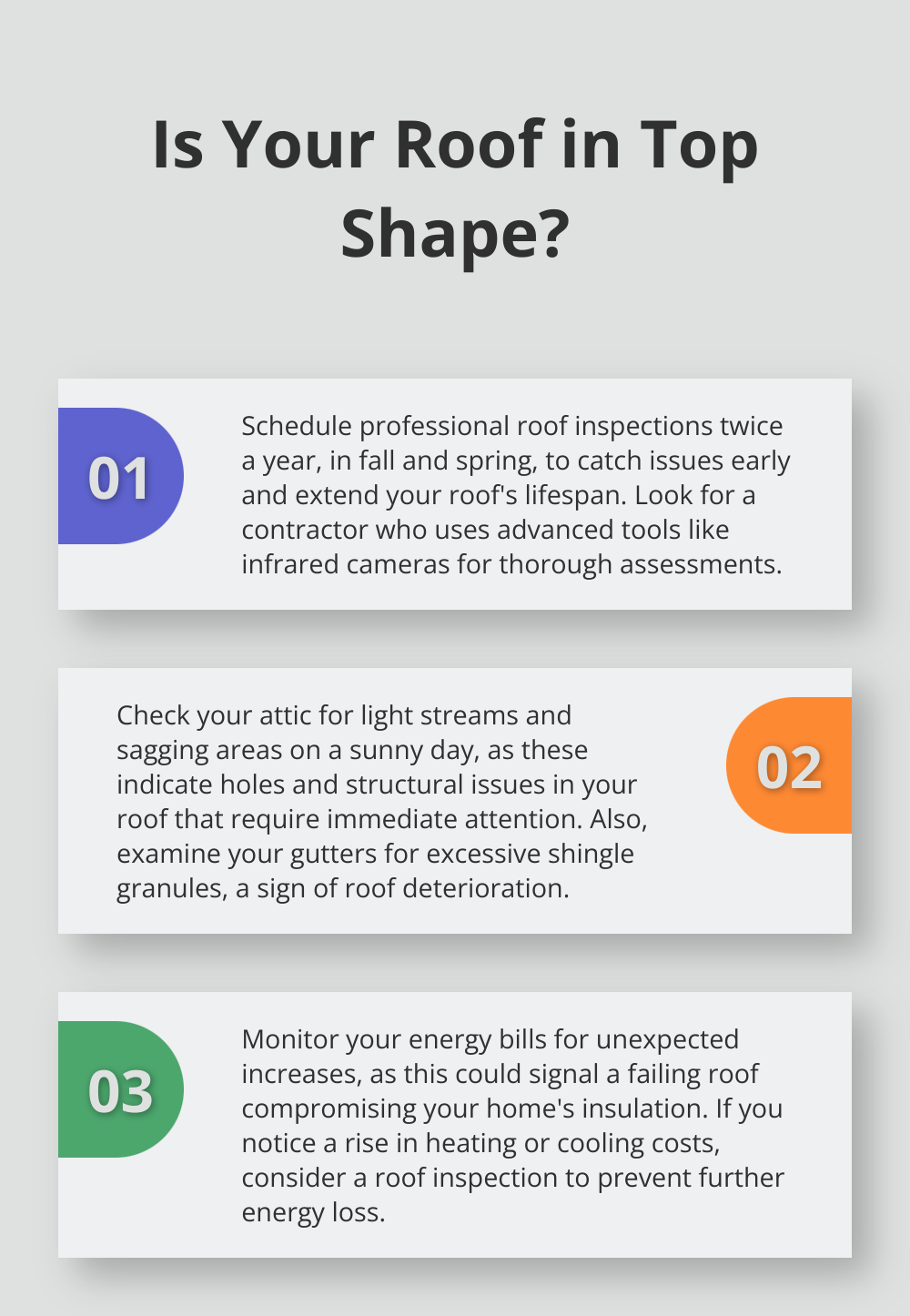Your roof is one of the most important components of your home, protecting you and your belongings from the elements. But how do you know when to replace a roof?
At Grandmark Service Company, we’ve seen firsthand the consequences of waiting too long to replace a failing roof. In this post, we’ll explore the telltale signs of roof damage, the impact of delaying replacement, and what to expect during a professional roof inspection.
How to Spot Roof Damage
Your roof faces constant exposure to the elements, and over time, it will show signs of wear and tear. Knowing what to look for can help you catch problems early and avoid costly repairs down the line.
Age as a Key Indicator
The age of your roof plays a significant role in determining its condition. An average roof lasts 25–50 years, depending on the quality, durability, and type of roofing material. If your roof approaches or has surpassed this age range, it’s time to start considering replacement. However, these estimates can vary based on local climate conditions and maintenance practices.
Visual Clues of Deterioration
Walk around your property and look for visible signs of damage. Curling shingles indicate that your roof is past its prime. These can appear as edges turning upward (called cupping) or the middle starting to rise while the edges stay flat (known as clawing). Missing shingles are another red flag, leaving your roof vulnerable to leaks and further damage.

Check your gutters for granules – the sandpaper-like substance on shingles. If you find an excessive amount, it means your shingles are deteriorating. The National Roofing Contractors Association suggests that losing granules signals your roof is nearing the end of its useful life.
Structural Warning Signs
Head up to your attic on a sunny day and look for any streams of light coming through the roof boards. These light beams indicate holes in your roofing that need immediate attention. While you’re up there, check for any sagging areas in the roof deck. A sagging roof is a serious structural issue that often requires complete replacement.
Professional Inspection Benefits
While homeowners can spot many signs of roof damage, some issues require a trained eye. Professional roofing contractors can provide a thorough inspection to catch these and other less obvious signs of damage. Regular roof inspections by professionals can extend the life of your roof, saving you money and reducing stress. They use specialized equipment and techniques to assess the overall health of your roof, including infrared cameras to detect hidden moisture issues.
The next section will explore the consequences of postponing roof replacement, highlighting why addressing these warning signs promptly is essential for your home’s integrity and your wallet.
The Hidden Costs of Roof Neglect
Energy Efficiency Plummets
A deteriorating roof compromises your home’s insulation. This forces your heating and cooling systems to work overtime. The EPA estimates that homeowners can save an average of 15% on heating and cooling costs (or an average of 11% on total energy costs) by air sealing their homes. With a failing roof, these savings disappear, and you might see your energy bills increase by hundreds of dollars annually.
Water Damage Wreaks Havoc
Once your roof’s integrity fails, water infiltration becomes a major concern. Even small leaks can cause extensive damage to ceilings, walls, and flooring. The Insurance Information Institute reports that water damage and freezing account for 1.6% of insured homes having such a loss. Prompt attention to roof issues can prevent these costly repairs.
Mold Takes Hold
Moisture leads to mold growth. The Environmental Protection Agency warns that mold can start growing within 24 to 48 hours of water exposure. Beyond the health risks associated with mold exposure, remediation costs are high. HomeAdvisor reports that mold removal typically costs between $1,500 and $3,500 (with severe cases running much higher).
Structural Integrity Compromises
Prolonged exposure to water can weaken your home’s structural components. This includes roof decking, rafters, and even wall framing. Over time, this can lead to sagging ceilings, warped floors, and in extreme cases, partial collapse of affected areas. The cost to repair structural damage often exceeds the price of a timely roof replacement.
Property Value Declines
A damaged roof significantly impacts your home’s curb appeal and market value. Potential buyers view a failing roof as a major red flag, often leading to lower offers or deterring purchases altogether. The National Association of Realtors suggests that a new roof can increase a home’s value by an average of $12,000.

The next section will explore what to expect during a professional roof inspection, a critical step in maintaining your home’s integrity and avoiding these costly consequences.
What Happens During a Professional Roof Inspection?
Exterior Examination
A professional roof inspection starts with a thorough examination of your roof’s exterior. The inspector scrutinizes the exterior of the roof to identify any visible signs of damage such as missing shingles, cracked tiles, or damaged flashing. Technicians walk the roof to look for signs of wear and damage. They check for loose, missing, or damaged shingles, with special attention to areas around chimneys, vents, and other penetrations (common leak spots). The inspection also includes an assessment of the flashing, which are metal strips that seal these vulnerable areas.

Experts look for issues such as cracked caulk, rust spots on flashing, shingles that are buckling, curling, or blistering, and excessive amounts of shingle granules in the gutters.
Interior Attic Inspection
After the exterior check, inspectors move to the attic. This internal view can reveal problems that aren’t visible from the outside. They search for signs of water intrusion, such as water stains, mold, or rot on the underside of the roof sheathing. They also inspect the rafters and trusses for any signs of sagging or damage.
Technicians use high-powered flashlights and sometimes infrared cameras to spot issues that might escape the naked eye.
Ventilation and Insulation Assessment
Proper ventilation and insulation are critical for your roof’s longevity and your home’s energy efficiency. Inspectors assess your attic’s ventilation system to ensure it allows for proper air flow. They verify that soffit vents aren’t blocked by insulation and that there’s an appropriate balance between intake and exhaust vents.
They also evaluate your insulation’s condition and depth. Inadequate insulation can lead to ice dams in winter and excessive heat buildup in summer, both of which can damage your roof.
Advanced Moisture Detection
Water damage isn’t always visible to the naked eye. That’s why inspectors use advanced moisture detection tools. These include moisture meters and infrared cameras that can detect hidden pockets of moisture within your roofing structure.
This technology allows inspectors to pinpoint potential problem areas before they escalate into major issues.
Written Report and Recommendations
After the inspection, you’ll receive a detailed written report that outlines the findings and recommendations. This report serves as a roadmap for maintaining your roof’s health and planning for future repairs or replacement.
The National Roofing Contractors Association recommends having your roof inspected at least twice a year, in the fall and spring. Regular professional inspections are key to extending your roof’s lifespan and protecting your home.
Final Thoughts
Your roof protects your home and family from the elements. Regular inspections and maintenance extend its lifespan and prevent major issues. A timely roof replacement enhances curb appeal, increases market value, and improves energy efficiency.

We at Grandmark Service Company understand the importance of a well-maintained roof. Our team of experts can help you determine how to know when to replace a roof. We offer comprehensive inspections, detailed estimates, and high-quality installations.
The next step for homeowners who wonder about their roof’s condition is to schedule a professional inspection. This will provide a clear picture of your roof’s health and help you make informed decisions. Don’t wait until you see visible signs of damage (proactive maintenance saves time, money, and stress in the long run).

